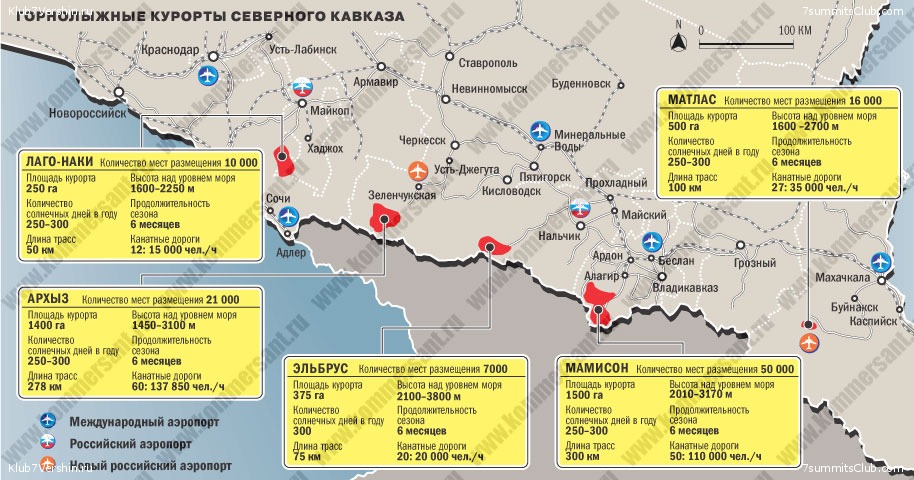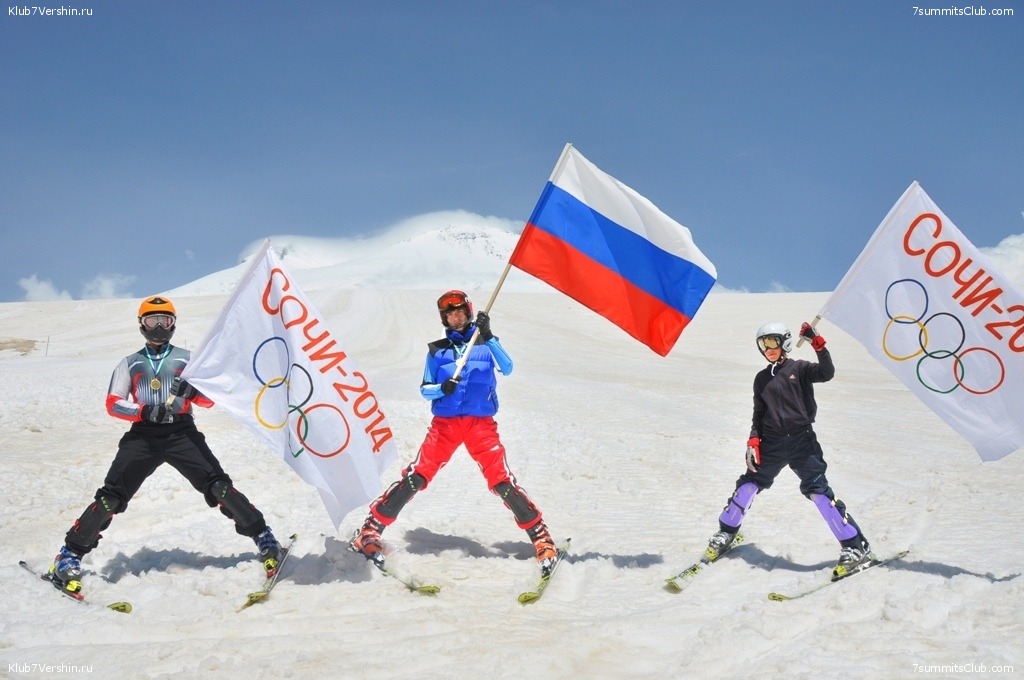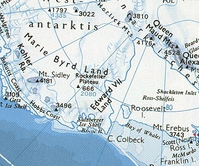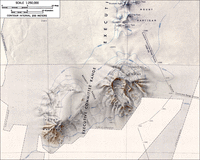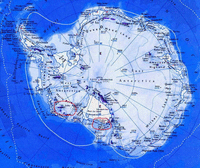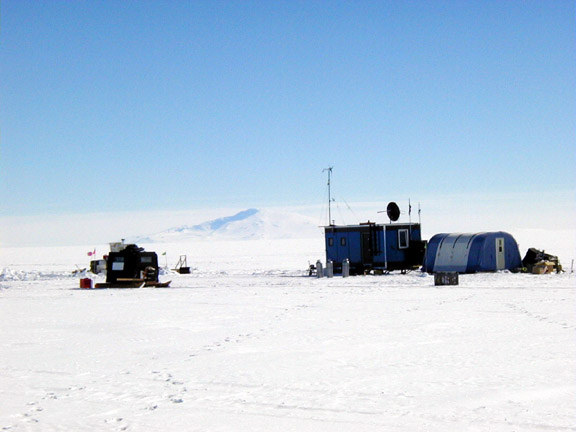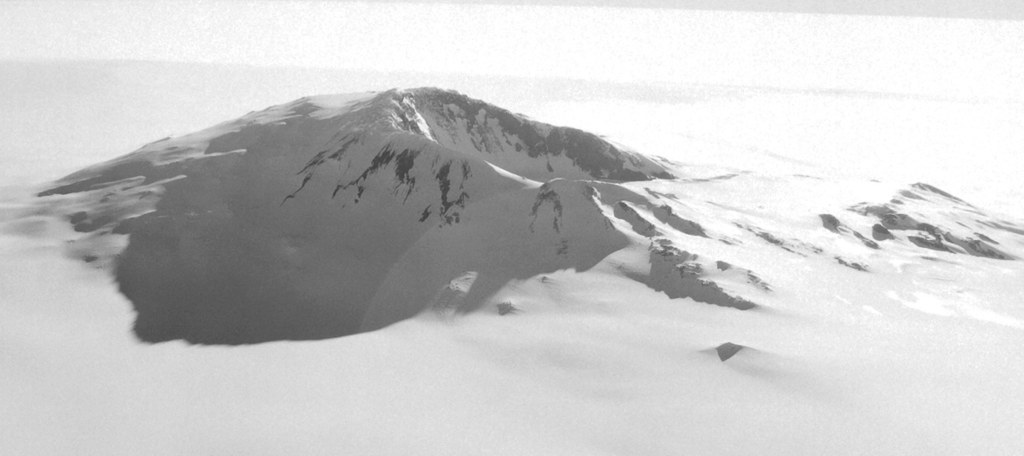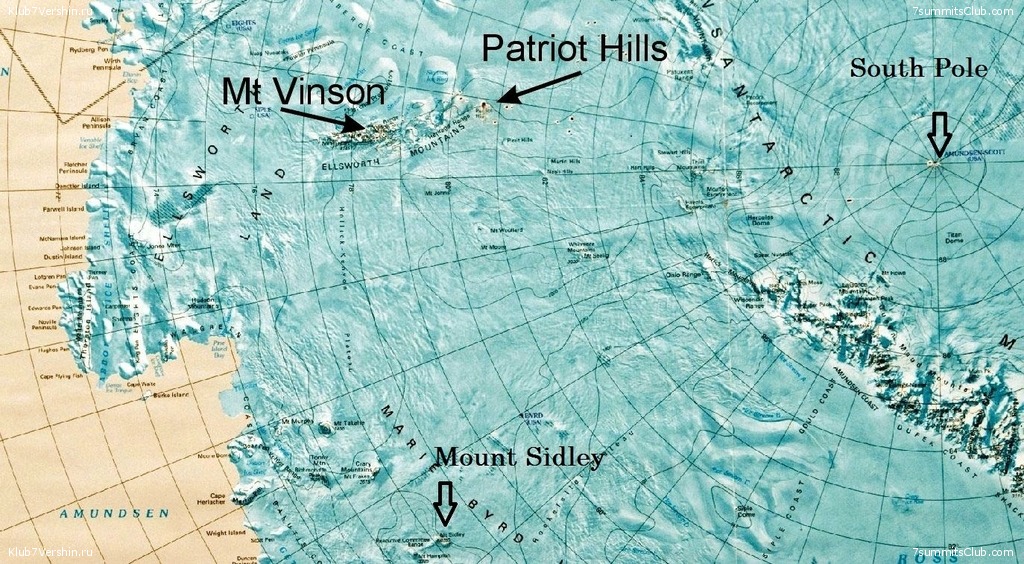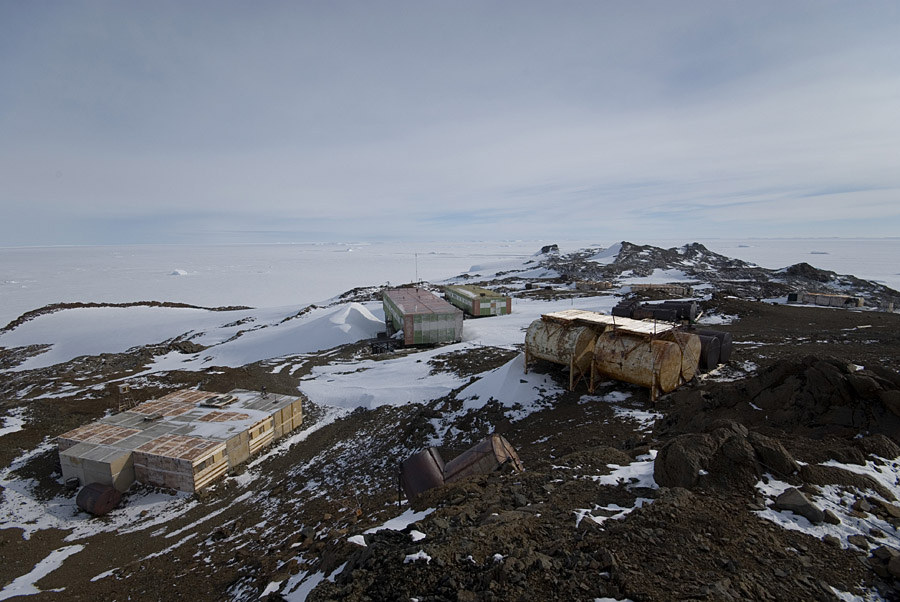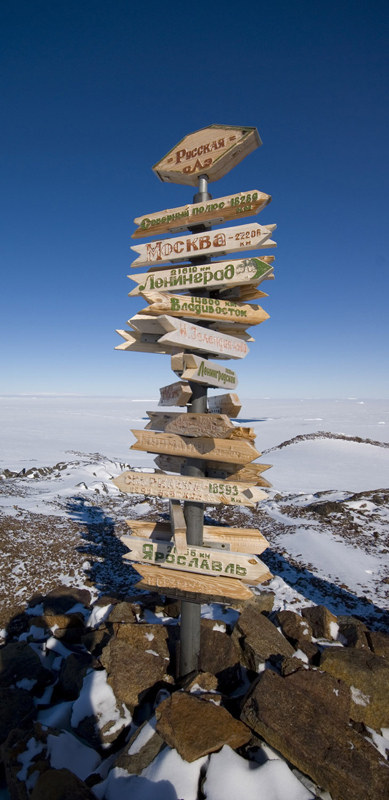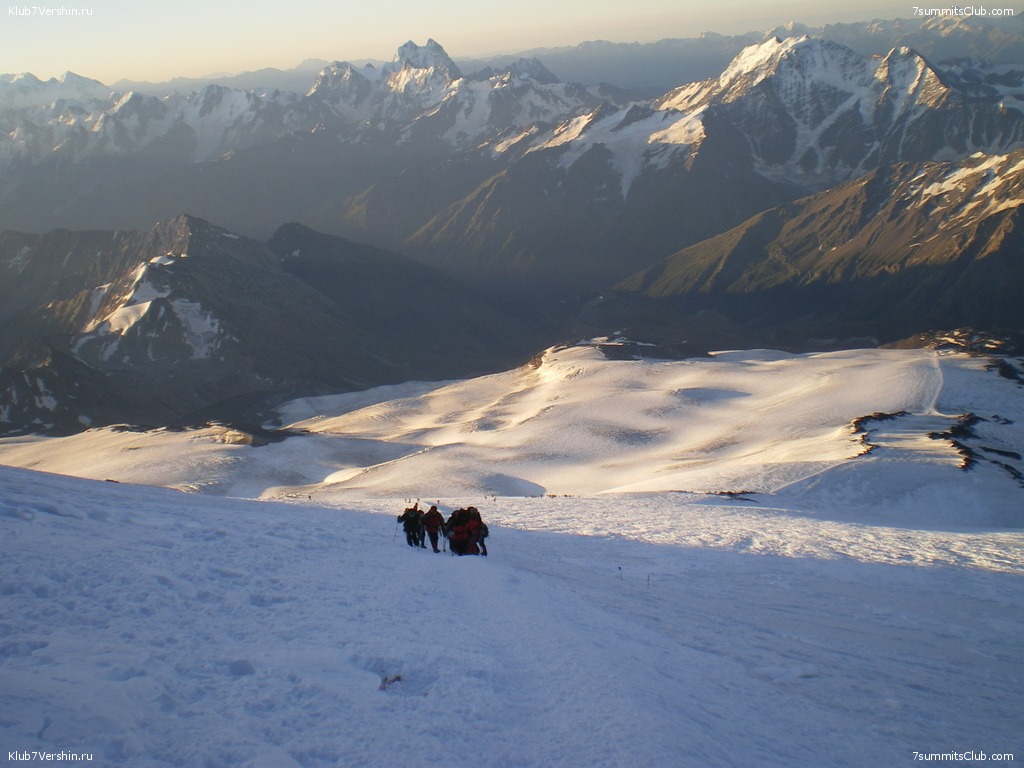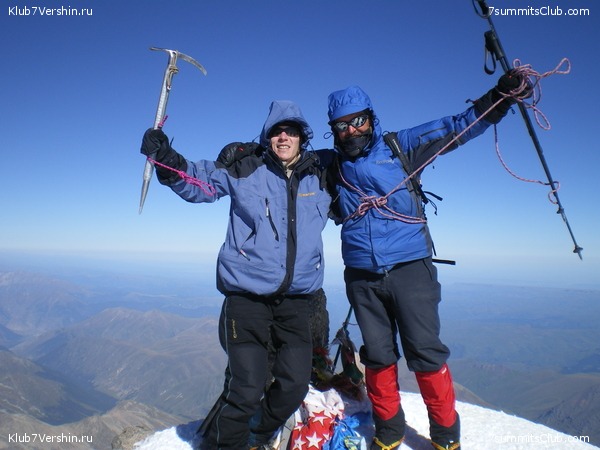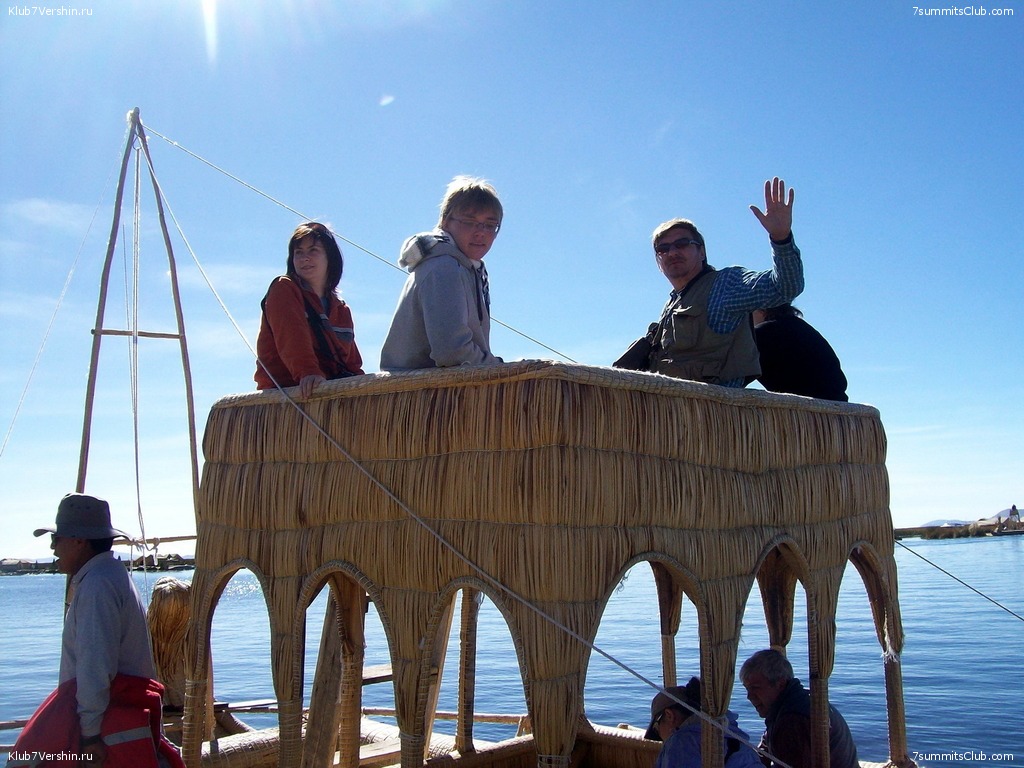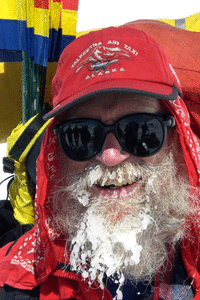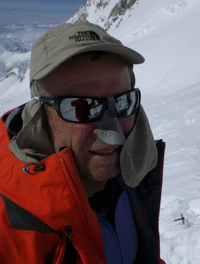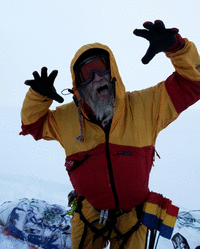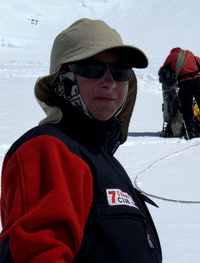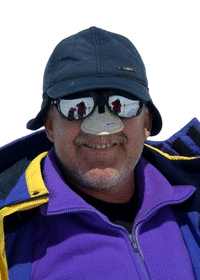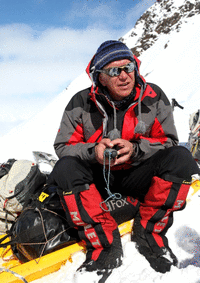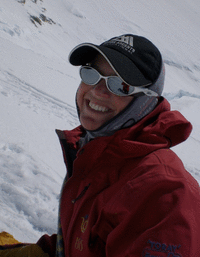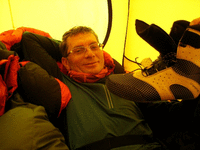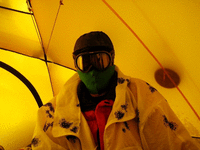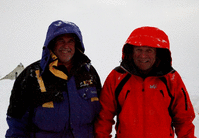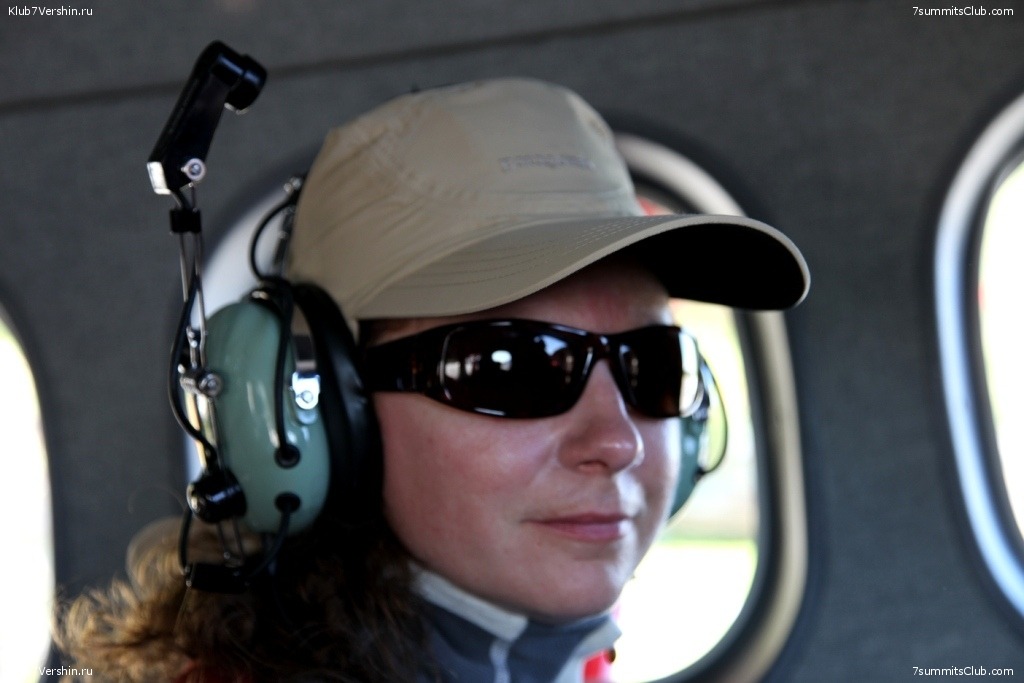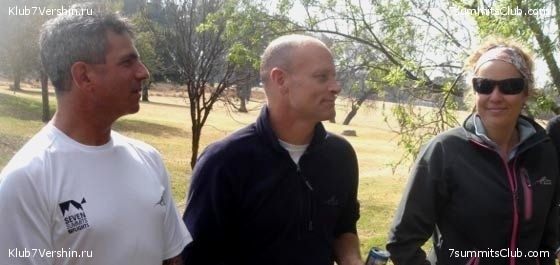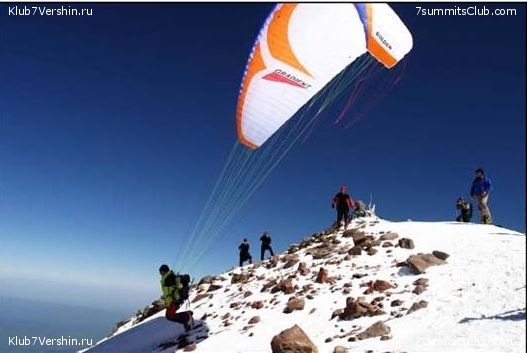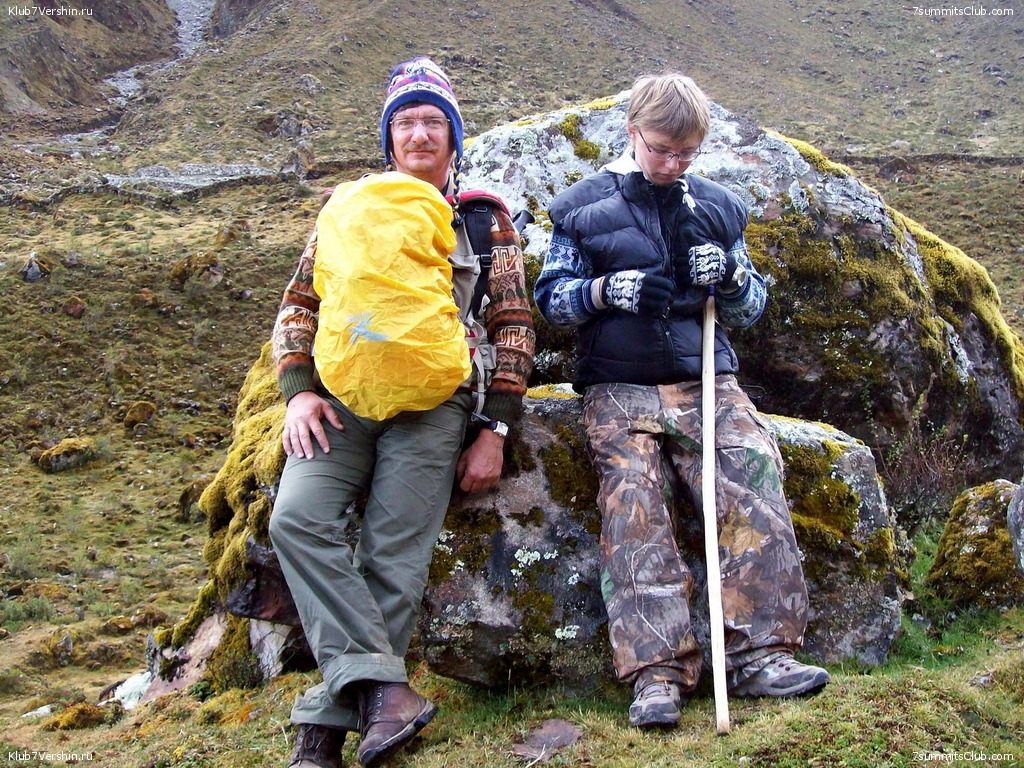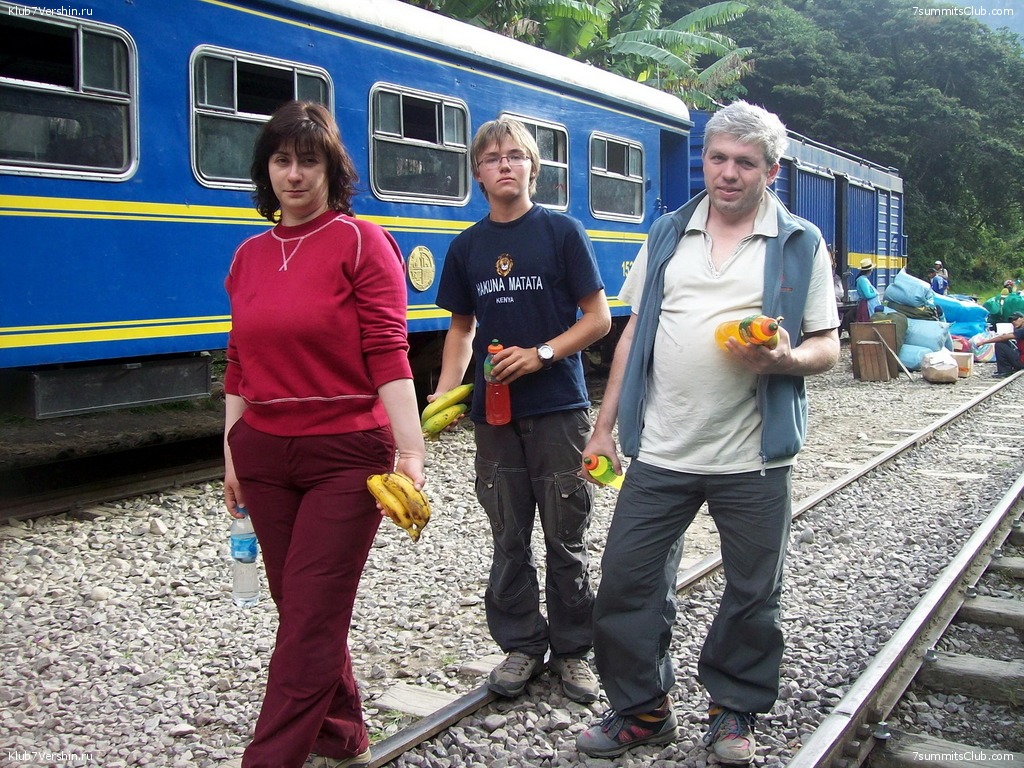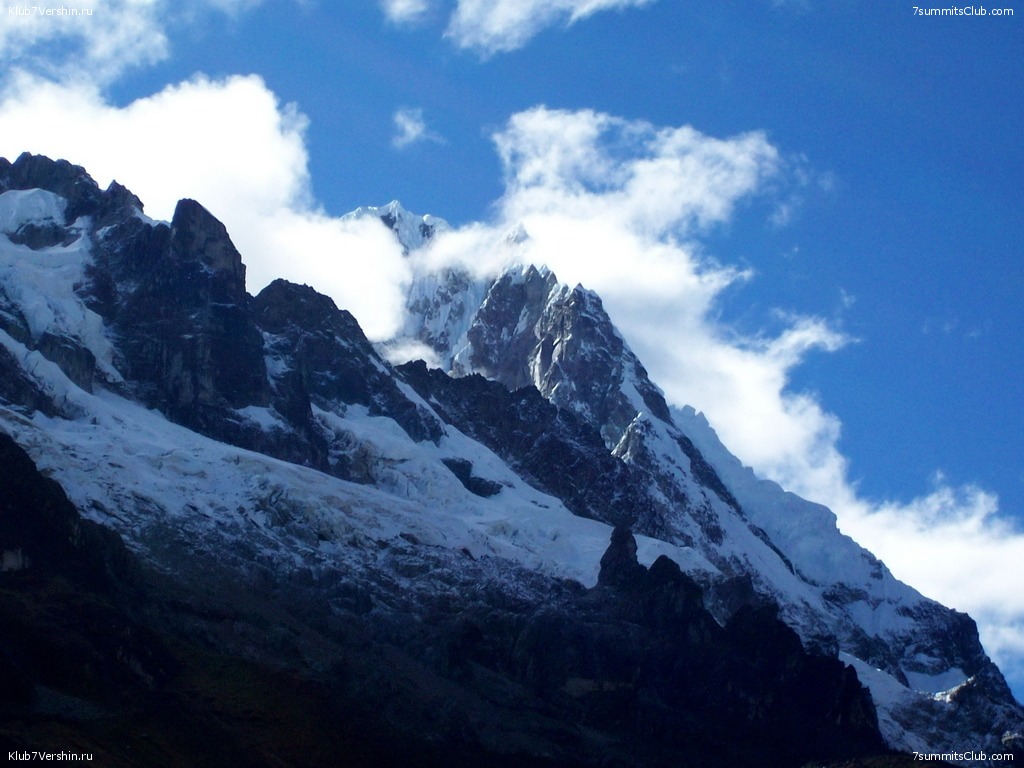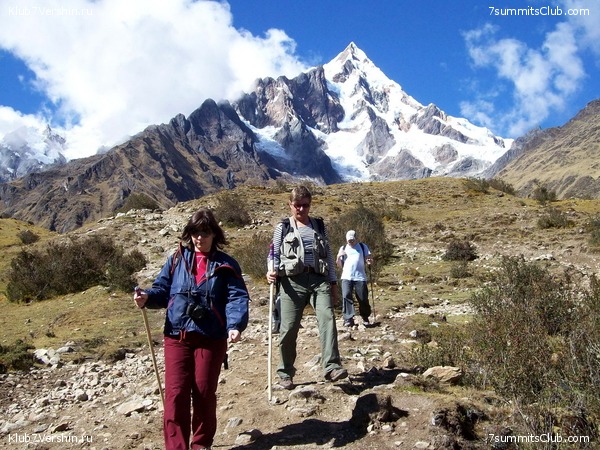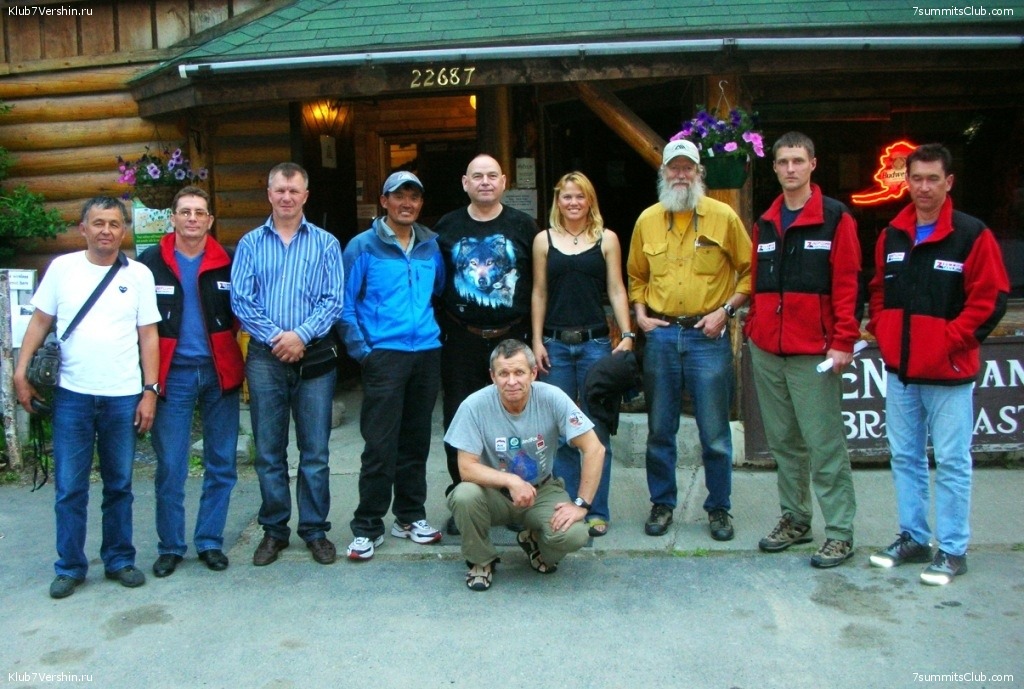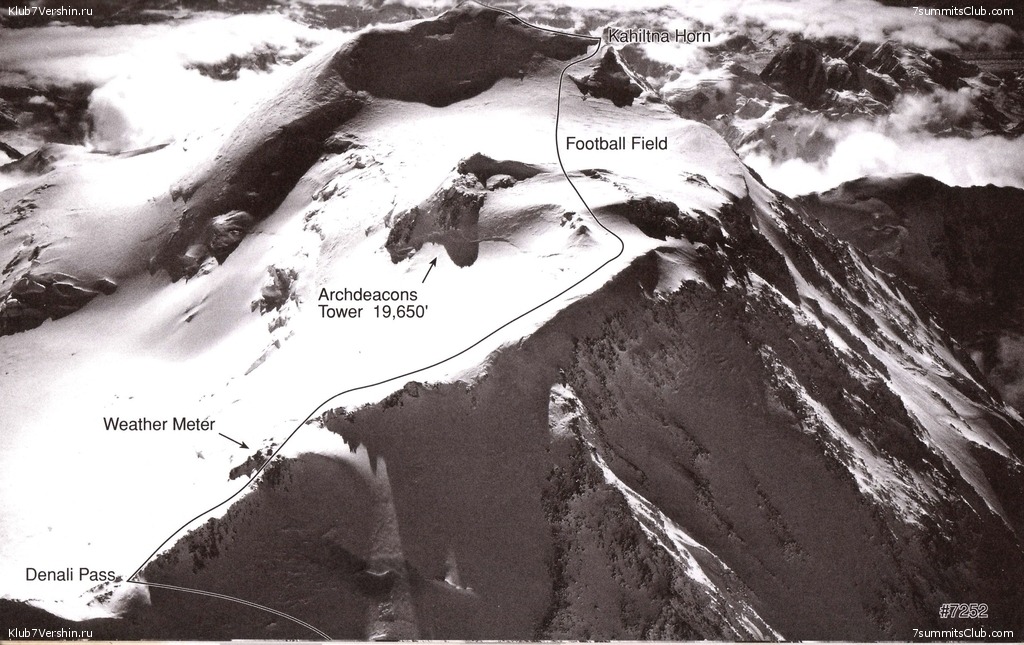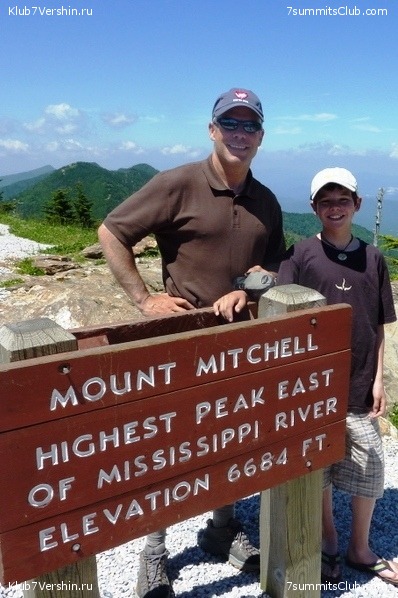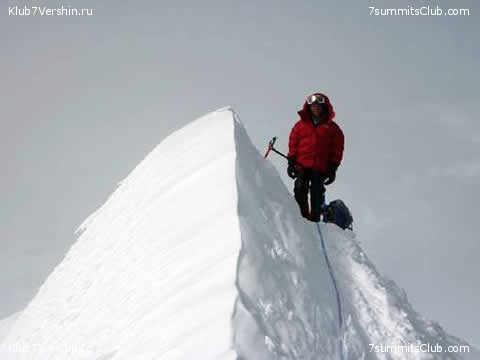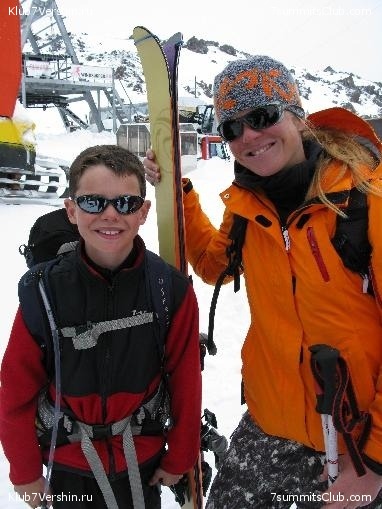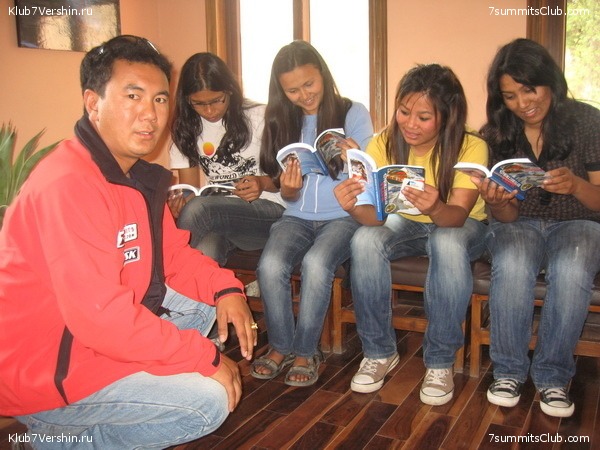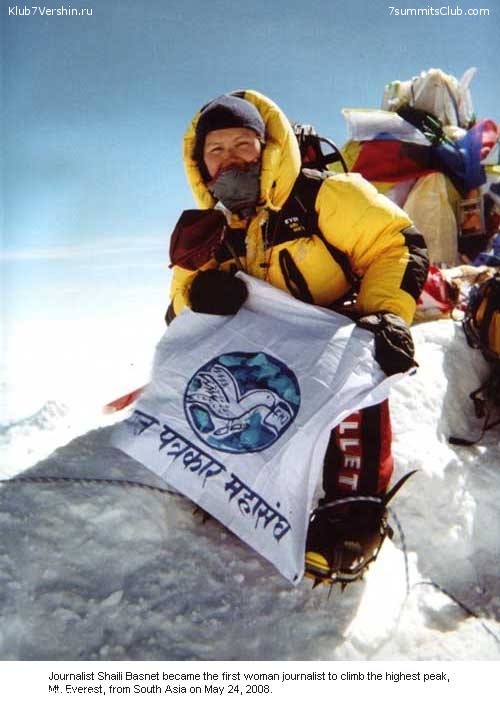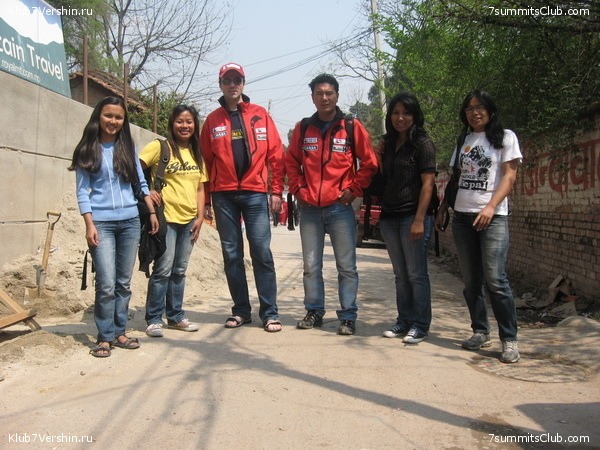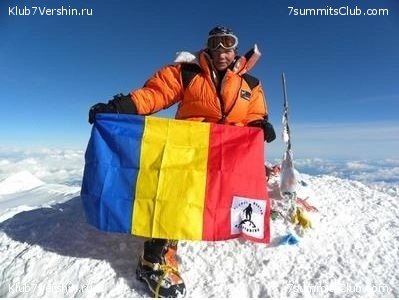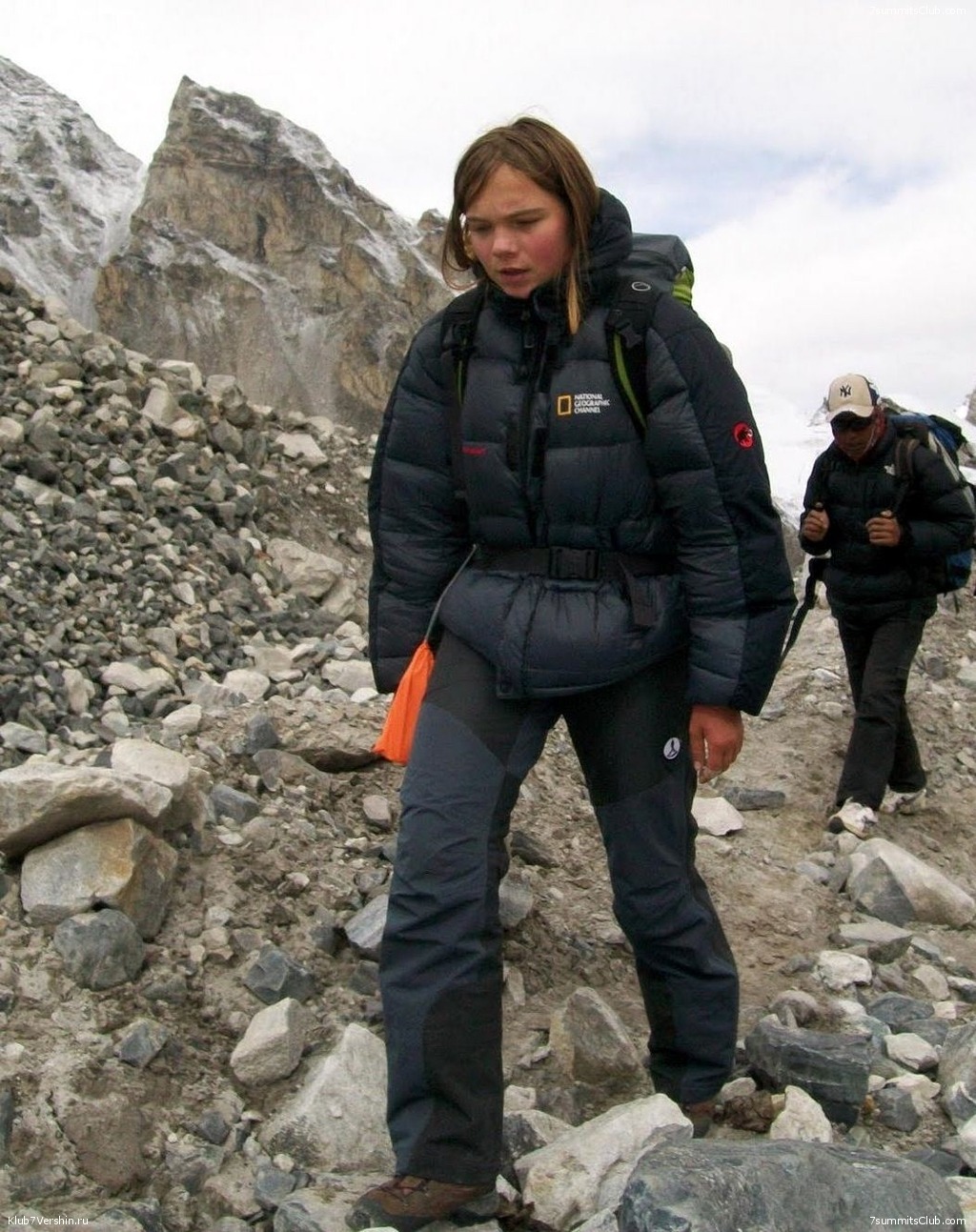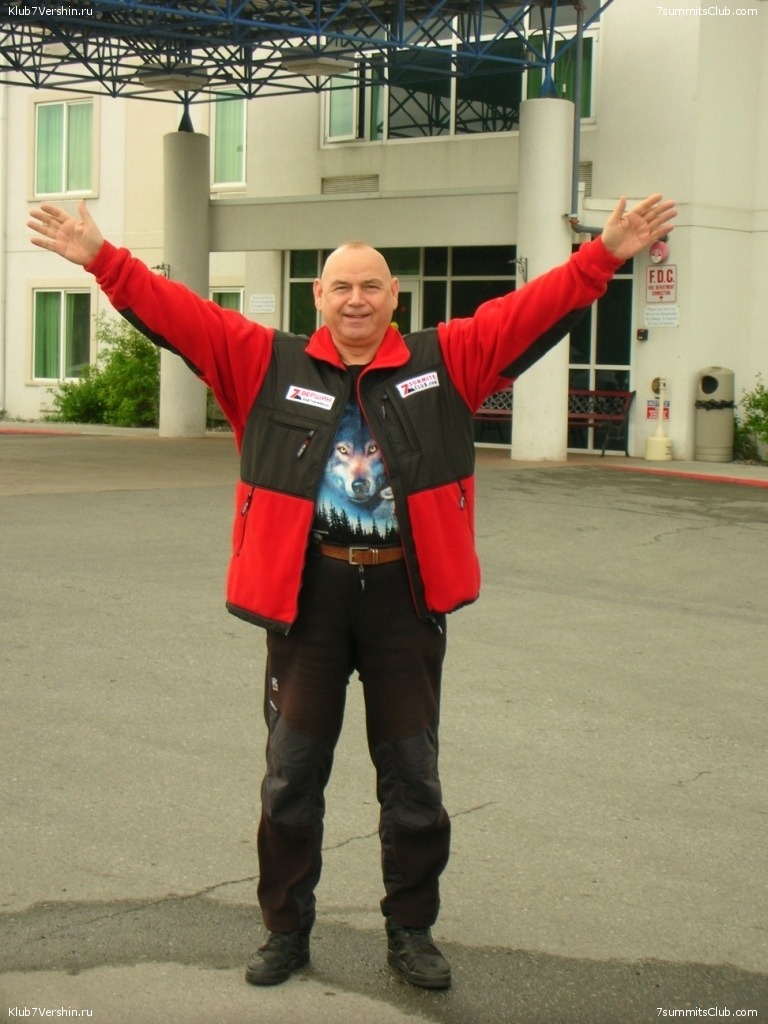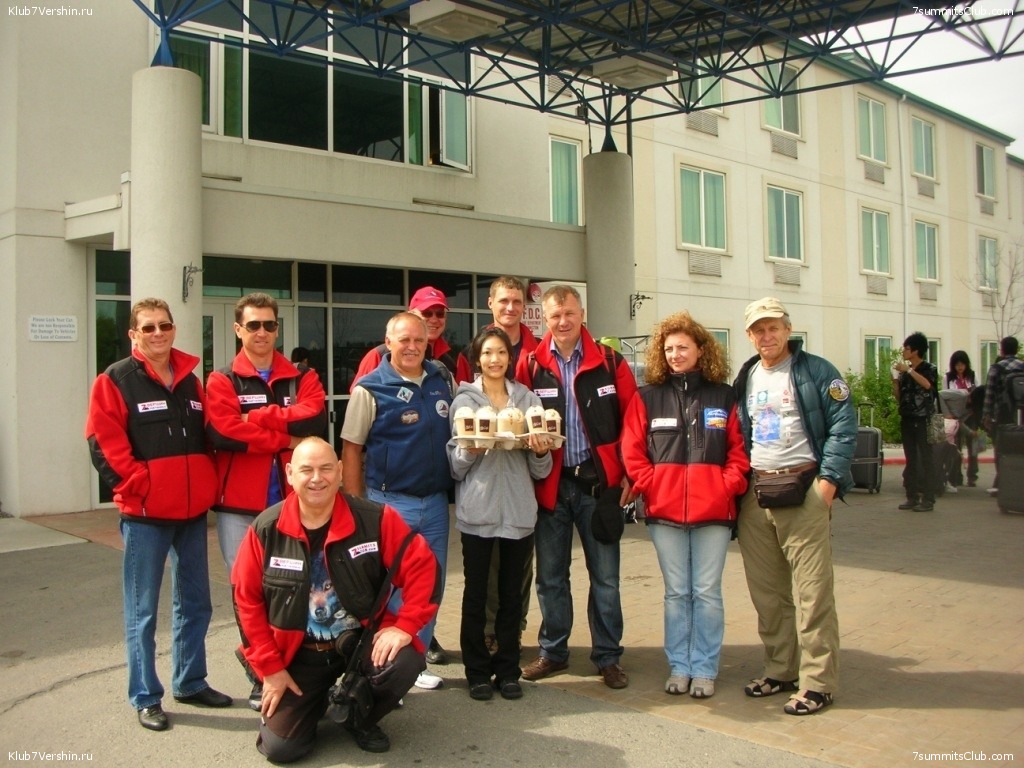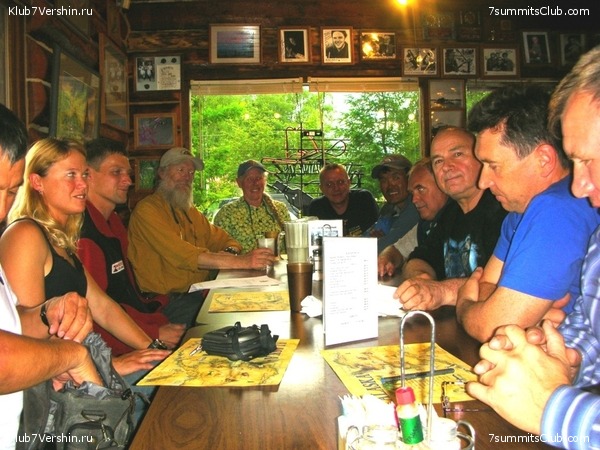7 Summits Club company news
How safe to travel to Russia to climb Mount Elbrus?
Elbrus.
We are often asked about the situation in the Caucasus. Is it safe to travel to Russia to climb Mount Elbrus? We can say that it has not been a single criminal case in relation to foreign tourists. Even if they come on their own. Traveling ...
We are often asked about the situation in the Caucasus. Is it safe to travel to Russia to climb Mount Elbrus? We can say that it has not been a single criminal case in relation to foreign tourists. Even if they come on their own. Traveling with our company, you are in complete safety. Thousands of climbers successfully make ascent to Elbrus and return home happy. We believe that is only beginning of new era. The North Caucasus is in the center of attention of federal authorities.
A bit strange but typical peinture: two presidents of Russia love skiing
The North Caucasus is transformed into a huge construction site. To do this, our leaders created a special structure, a new federal district. Alexander Khloponin - one of the best managers of the country, was invited to lead this work. Already, the road to the northern slopes of Mount Elbrus started to build. There will be construction of a new resort. Each year the Mount Elbrus area is changing.
Big money, which will be brought to the area, forcing many local residents nervous. Everybody wants to be on the first film. Therefore, the struggle is between different groups and factions, a struggle which is often not visible, but its results are visible. It is not visible for tourists and climbers, fortunately.....
Five new ski-resorts on the map (red)
******************************
That's what the site says PlanetaSKI.eu
Forget The Tirol, the 3 Valleys or the Dolomites. In a few years it could be resorts in Karachayevo-Cherkessia or in Kabardino-Balkaria. The Winter Olympics in 2014 may just be the start of skiing in Russia.
Russia it seems has a huge untapped potential and the powers that be want to do something about it. The names don't quite run off the tongue in the same way as the popular resorts in the Alps but the mountains, snow and peaks are just waiting to be developed by the ski industry.
That is according to the Russians anyway.
5 new ski areas are being planned for the end of the decade in a $15b development. The resorts would be linked and available on one ski ticket. There would be 800 km of ski runs; bigger than many of the linked resorts in The Alps.
The Russian government is backing the move in a public-private partnership. Both President Medvedev and Prime Minister Putin are keen skiers.
Just the start perhaps
It's hoped a catalyst will be the 2014 Winter Olympics that will be held nearby in Sochi on the Black Sea.
According to reports in the Russian media international banks including JP Morgan Chase and Morgan Stanley are looking at getting involved.
The building and running of the 5 resorts would create 160,000 jobs.
The government is also hoping for a political benefit too as the mainly Muslim area has a high level of political instability and it is hoped new jobs and the economic benefits will ease tensions.
Over 1,000 people lost their lives in the area in the past 12 months in political violence.
The resorts will be constructed at Matlas, Dagestan; Mamison, North Ossetia; Arkhyz, Karachayevo-Cherkessia; Lago-Naki, Adygeya; and on Mount Elbrus in Kabardino-Balkaria.
Ambitious plans indeed.
Project 7 Volcanoes: Mount Sidley (Antarctica), the first climbing expedition
Sidley.
Program “Seven volcanoes”, it is climbing the highest volcanoes all continents over the world, Club Seven Summits organized in early 2011 the first mountaineering expedition to the highest volcano in Antarctica Mt. Sidley. Head ...
Program “Seven volcanoes”, it is climbing the highest volcanoes all continents over the world, Club Seven Summits organized in early 2011 the first mountaineering expedition to the highest volcano in Antarctica Mt. Sidley. Head of expedition - Alexander Abramov. Among confirmed participants: Dmitry Moskalev, Italian Mario Trimeri (who can become the first person climbed the seven volcanoes), Romanian climber Crina Popescu, which in December will celebrate 16 years (she also ends the program "Seven of the Volcanoes").
Mount Sidley is located in the mountain massive Executive Committee Range. This is chain of volcanic mountains in Antarctica, called the Marie Byrd Land. The thickness of the ice cover in this part of the continent achieves two kilometers. In the case of complete disappearance of the ice covered at this site will be an archipelago of volcanic islands such as Japan.
The height of the Mountain Sidley - 4,285 meters, the foot of the volcano has an altitude of about 2500 meters. Coordinates: 77 ° 02 'S 126 ° 06'z. E..
Mt. Sidley - a gigantic volcanic massif, a huge bulge dominates the uniform ice surface of the surrounding area. One side of the mountains form a huge caldera crater with a diameter of 5 km, its walls towering about one km altitude. And there may be found difficult climbing routes. On the other side there is only a gentle slope and the path to the summit can be maid on skis. However, the question with the highest point is still not fully clear. There may be several points in the ridge
We will have to check several points in the long summit ridge, with GPS, make sure a correct climbing line for next climbers. So we have to climb with the elements of a full exploration, as we have no high-quality report from first climbers.
American base in 2000 and Mt.Sidley
The mountain was discovered by Rear Admiral Richard E. Byrd on an airplane flight, November 18, 1934, and named by him for Mabelle E. Sidley, the daughter of William Horlick who was a contributor to the 1933–35 Byrd Antarctic Expedition. Despite its lofty status, the volcano languishes in obscurity due to its extremely remote location. It is little known even in the mountaineering world compared to the far more famous Mount Erebus, the second highest Antarctic volcano which is located near the U.S. and New Zealand bases on Ross Island. The first recorded ascent of Mount Sidley was by New Zealander Bill Atkinson on January 11, 1990, whilst working in support of a USAP scientific field party.
For the first time the foot of the volcano Seeley was reached by scholars of the American Antarctic Expedition ATV in the season 1958-59. The leader of expedition a Scottish glaciologist John Pirrin climbed up its slope nearly to the top, but to the highest point is not reached.
Under the program of studies US-ITASE American scientists visited the volcano area Seeley in 2000. Then they have a large collection of rocks and minerals, which enabled them to reconstruct the geological history of the volcano.
The route of our ascent involves a standard flight Punta Arenas - Patriot Hills on the big plane and then to the base camp on Mount Sidley on a small plane. What is the ascent to the summit, we can only guess. But we hope that our expedition will go down in history in many ways. And above all, accurately establishing the route, identifying the highest point of the ridge, taking pictures of all this and widespread throughout the world of information.
Russkaya station at Cape Berks on coast of Marie Byrd Land worked in ten years (1980-1990), it is only 300 km from Mt. Sidley.
The New York Times about Mt. Elbrus Climb
Elbrus.
To the Top of Europe By FREDRIK WESSLAU Published: July 16, 2010 “He doesn't do a lot of sports, does he?” asked Elena, our Russian mountain guide, pointing at me. It was not a very promising start for someone hoping to climb to ...
To the Top of Europe
By FREDRIK WESSLAU
Published: July 16, 2010
“He doesn't do a lot of sports, does he?” asked Elena, our Russian mountain guide, pointing at me. It was not a very promising start for someone hoping to climb to the peak of Mount Elbrus.
I had accepted a last-minute invitation to join three other amateurs set on climbing the mountain. The thought of conquering Europe’s highest peak was irresistible, even though the guide wasn’t far off the truth with her question.
While Elbrus is not considered a technically difficult climb, the elevation and unpredictable weather make it a challenge. At the peak, 5,642 meters up, air contains only about half the oxygen available at sea level. Normal functions such as walking can become extremely laborious.
After spending a few days acclimatizing ourselves, we settled into our base camp on Elbrus’s southern slope at 3,750 meters. The camp consisted of nine cylindrical huts made from an old Russian pipeline and painted in the colors of the Russian flag. The accommodation and food was basic, though this didn’t seem to bother the mice.
The view from the base camp made up for the no-frills lodging. The Caucasus Mountains stretched out before us to the south.
Elbrus stands just north of Russia’s border with Georgia, straddling the Russian federal republics of Kabardino-Balkaria and Karachay-Cherkessia. The inactive volcano dwarfs its neighbors. On clear days, you can see the Black Sea from the summit.
This part of the Caucasus has captured the imagination of Europeans for millennia. The ancient Greeks believed it was here that Zeus chained Prometheus to a mountainside and had an eagle eat at his liver as punishment for stealing fire and giving it to mankind.
Local folklore has it that Noah’s ark ran aground on Elbrus before eventually settling on Mount Ararat several hundred kilometers to the south. As it broke free from Elbrus, the ark’s keel split the mountain in two, creating its trademark twin peaks.
In more modern times, Elbrus has continued to mesmerize. In August 1942, as part of Operation Edelweiss aimed at taking Baku’s oil fields, a Nazi mountain division captured Elbrus and planted a Nazi flag on the summit. Six months later, a Soviet alpinist (who happened to be the father of one of our guides) climbed the mountain and tore down the flag as the Germans retreated.
During the Cold War, Elbrus was locked behind Iron Curtain. The mountain lost its place in the West’s consciousness as the highest mountain in Europe. Schoolchildren in the West were taught that this honor belonged to Mont Blanc in the French Alps, while travel guides, encyclopedias and newspapers affirmed this to the world. Denying that Elbrus was Europe’s highest peak became a way of denying that the Soviet Union was part of Europe.
The fall of the Berlin Wall and the expansion of the European Union has done much to align political Europe with geographic Europe. Today, only the Black Sea separates the Caucasus from the E.U. And Elbrus again enjoys the title of the highest peak in Europe.
All of this felt rather abstract at 3,750 meters. After a short night, we stepped out of our pipeline-huts at 3 a.m. The night was cold, and the thin air pierced my lungs. We set off under a star-coated sky to conquer Elbrus.
From 4,700 meters, we moved up the southern slope’s main route. As day broke, Elbrus’s twin peaks appeared before us, and the Caucasus mountains paraded their rugged contours behind us.
At 5,000 meters we turned left to traverse to the saddle between the two peaks. The sun was bright but the wind and altitude kept temperatures well below zero. My head was thumping and my heart was on overdrive. Every step felt like a small triumph. From the saddle, we walked diagonally up across a steep overhang, toward the Western summit.
Then, around noon, after nine hours of trudging through the snow with crampons strapped to our boots, we reached the summit plateau. From here it was a short walk to the summit — the undisputed highest point in Europe.
Fredrik Wesslau is a political adviser to the European Union’s special representative for the South Caucasus.
A successful ascent on Elbrus despite bad weather
Elbrus.
Weather forecasts for several days on Mount Elbrus shows a lack of visibility, strong winds and snowfall. No improvement. So we had to go today, not trying to wait for the mercy of the weather. Our experienced guides Victor Bobok, Pavel ...
Weather forecasts for several days on Mount Elbrus shows a lack of visibility, strong winds and snowfall. No improvement. So we had to go today, not trying to wait for the mercy of the weather. Our experienced guides Victor Bobok, Pavel Milanov and Oleg Miller decided to start this night.
They knew that it would not be easy and it turned out. The climb reminds winter ascents of Elbrus. The Group was ready for such situation. The two climbed on skis and went down. Victor Bobok twice went to the summit from the saddle to ensure 100% success of the team. All went on and all went down, albeit at different times. At an altitude below 4000 meters it was already warm, even in fog. More below – it was hot, climbers were tired, but there they were waiting for a shower, a restaurant, a clean bed in the Povorot hotel.
Congratulations to all!
News from our group in Peru, tomorrow - flight home
Yesterday, after a long trip to Peru, a group of 7 Summits Club came to Lima, the capital of Peru. In our active: boating on Lake Titicaca, overnight on the island Amantani on an Indian family, visiting the floating islands of reeds Totoro ...
Yesterday, after a long trip to Peru, a group of 7 Summits Club came to Lima, the capital of Peru. In our active: boating on Lake Titicaca, overnight on the island Amantani on an Indian family, visiting the floating islands of reeds Totoro and familiarity with the life of the local Indian Urus.
Then we moved to Arequipa, on road admiring the graceful vicuña - wild relatives of Lama. Arequipa - amazing colonial city of white stone. From the city you can see beautiful white tops of volcanoes - Misty 5825 m, 6075 m Chachani and Pichu Pichu 5500 m. And also, they say, quite near there is the highest volcano of Peru Coropuna 6425 m. It is not yet explored by us! There is something to aspire!
After Arequipa we fly over the famous Nazca lines, and visited the Ballestas Islands, full of fur seals, penguins Humboldt and various birds. It was the Pacific Ocean. So we have to travel from the Pacific coast up to altitudes of 4600 m pass of Salkantay and again descended to the ocean.
Today we have a tour of Lima and visit at Museum of gold the Inca gold. Tomorrow - flight home.
See you soon!
Luba. Guide and leader of the group
Second from Seven for Nepal Women Team
Elbrus.
We are waiting for them in Elbrus. Report: “ Our team climbed Mt Kosciuszko/Targangil on 7th July. It was a beautiful clear day. It was incredible experience to climb one of the world’s oldest mountains. Like they say in ...
We are waiting for them in Elbrus. Report: “ Our team climbed Mt Kosciuszko/Targangil on 7th July. It was a beautiful clear day. It was incredible experience to climb one of the world’s oldest mountains. Like they say in Australia, it may not be the tallest mountain in the world but it certainly makes you feel like on top of the world.
Outdoor Education Group from Moss Vale and Wilderness Sports made all the arrangements for the climb. Kosciuszko National Park helped with much information on the impact of climate change on the Snowy Montains. Ranger Rob Gibbs and Apline Scientist Ken Green accompanied the team on the summit along with friends from The Crossing Land Education Trust, Veg Climate Alliance and media.
We learnt from Ken that Australia has lost 30% of its snow in last 50 years. Mountain Pygmy Possum and alpine vegetation that used to get thick snow cover to hibernate underneath are now exposed to frost as there is not enough snow. As a result, certain species are threathened as cold is killing them”
Site: http://sevensummitswomen.org/
--
The team
The team members came together in 2007 to climb Mt Everest in 2008 spring. The expedition was called ‘First Inclusive Women Sagarmatha Expedition 2008 Spring’ (FIWSE).
Fastest climber to summit Everest Mr Pemba Dorje Sherpa brought forward the idea of organizing a Nepali women’s Everest expedition in order to increase their participation in mountaineering. Only seven Nepali women had reached the top of the world till 2007.
Mr DaGombu Sherpa and Ms Susmita Maskey joined the organizing committee. Nine women, who are now on a mission to climb the 7 summits, joined the team as climbing members.
FIWSE faced several challenges. It was not easy for the team to raise an enormous budget required for the expedition. Thanks to Nepal Government, United Nations World Food Programme, BP Koirala India-Nepal Foundation, United Nations Development Programme, MTV Exit, Swiss Agency for Development and Cooperation and many of our supporters, FIWSE was able to create history.
All women in the team made it to the summit and by May 25th, 2008, FIWSE became the most successful and largest women expedition to climb Everest. Also, first Nepali women from Brahmin, Gurung, Danwar and Chettri communities reached the top of the world.
The climbing members started a non-profit, non-government organization Global Inclusive Adventure Organiation (GIA) after the expedition. GIA focuses on environmental, empowerment and educational aspects of tourism sector.
The team traveled across sixteen districts of Nepal visiting schools and motivating students to climb their own mountains in a program called ‘Inclusive Sagarmatha Speakers’ , supported by United Nations World Food Programme. After the expedition, it was during the school program the team witnessed instances of climate change in various parts of Nepal. This encouraged the team to carry with them a message for climate action.
Everest Women 7 Summits Eco-Action, GIA’s brainchild was thus born.
Shailee Basnet (Coordinator) - A graduate of Business Information Systems and a Post Graduate of Journalism, she works as a reporter for Himalmedia. She became interested in climbing and mountaineering because of the physical and mental challenges it poses, which are quite different from her line of work. Lack of involvement in any kind of sports during her early years made her interested in challenging her limits as she grew up. At 25 years of age she reached a new height on May 24th 2008 by standing on top of Everest.
Asha Kumari Singh - A 24-year-old student, Asha comes from Danuwar community from Meghrail, Mahottari. She comes from a society where women are barely aware of their rights, are supposed to get married off sooner than later and dowry is rampant. Thanks to her grandmother who thought Asha was the ugliest girl among all five sisters and hence thought it was necessary to educate her, in case nobody wanted her marry her. Asha however was not worried about her looks but coming from the flatlands of Terai, was always curious about high mountains. She came to Kathmandu for higher education and got an opportunity to join the Female Outdoor Leadership training in the Annapurnas in the year 2004. Given her background she challenged conventions and impressed naysayers when she started climbing. She made not only her community but also the entire nation proud as she stood on top of Everest on 24th of May 2008.
Chunu Shrestha - Hailing from a poor Kathmandu family, Chunu began working to help support her family while she was just a sixth grader. Despite the financial hardships, she finished high school and started pursuing her education in Bachelors of Arts. When she heard about Susmita Maskey’s summit attempt in 2005, she became inspired by the possibility of succeeding in adventure tourism to support her family. With FIWSE she was able to nurture her passion for the outdoors that she dreamt about during her long days of work. At 27 years of age, she reached the Everest summit on the 25th of May 2008.
Nimdoma Sherpa - Still in high school, Nim is the youngest woman to climb Everest. Despite her small stature, she is dauntless and a very good climber, who impressed everyone during the Basic Mountaineering Course. She had her own struggle on the personal front. Her father passed away while she was a tenth grader. Still she continued her education, subsequently becoming the first in her family to complete the School Leaving Certificate (SLC). She spent lonely childhood in Kathmandu away from her mother for education. She took care of household chores while other children played. But she knew her life was destined to be different than that of everyone else around her. When she learnt about First Inclusive Women Sagarmatha Expedition she knew this is what she was waiting for. At 17 years, she set foot on the top of the world on the 22nd of May 2008. She is ruling wall climbing national champion.
Pema Diki Sherpa - Pema Diki, 22, is one of the three girls born to a struggling couple who moved to Kathmandu from Dolakha with nothing but the clothes on their backs. Two years before joining the expedition, a chance to trek in Gosainkunda enchanted this acupuncture assistant. Basic Mountaineering Course presented her more challenges which left her with desire for more climbing experience. She achieved what she had long dreamt for on 24th of May 2008 when she bowed her head to Cholmolungma, the mother goddess of the world. She has great faith in education and as a child dreamt of being a teacher. The team has been conducting educational interaction in different parts of the country, sharing the experience of struggles and lessons learnt during the expedition, motivating students to believe in their dreams. With this program her childhood dream became reality. She aspires to travel and learn more in life and share her knowledge and experiences with youth all over the world.
Pujan Acharya - Pujan worked as a human rights activist in Dolakha. From early on, despite growing in a society where women are supposed to stick to household chores, she had a passion for sports. In her village, she used to play with men for there wouldn’t be women players. An accomplished volleyball player and marathon runner, Pujan, 25, holds several awards for competition at the district Level. But that was not enough for someone who grew up at the foot of Rolwaling Himalayas. She gained her first mountaineering experience in 2003 when she completed Female Outdoor Leadership training. Finally she made it to the summit of Mt. Everest on 22nd of May 2008. She enjoyed a different taste of Everest and adventure as she skydived in the Everest region on 17th October, 2009 from 29,300 ft. During the cabinet meeting of Nepal Government held at Kalapatthar (5240 m), she actively participated as a venue manager.
Maya Gurung - Maya had a childhood marred with struggle and was an early rebel. She saw poor state of women both in her home and village. She always wanted to break free from it. Maya tried hands on various fields including bowling where she reigned as national champion for four years. But nothing really satisfied Maya before she went ahead to join Basic Mountaineering Course and then to climb Everest. This rebel at heart finally lived her dream of climbing on top of the world on 22nd of May 2008, and became the first Gurung woman summiteer at the age of 28. She lived her long cherished dream of sky diving on 10th October, 2008 with Everest in the backdrop. Maya led the Mt Manaslu clean-up expedition as coordinator and also was active venue manager for the cabinet meeting of Nepal Government held at Kalapatthar (5240 m) on 4th December, 2009. Her dream is to see women empowered and educated so that they are at least able to stand up for themselves.
Ngabhang Phuti Sherpa - Ngawang is from Taplejung district, home of Kanchenjunga. She lost her parents in an early age. She and her elder sister quit education to take odd jobs to look after younger siblings. She ran a restaurant in Kathmandu for couple years and quit it later after her sister went abroad. Several Sherpa climbers encouraged her to explore mountaineering. But she did not like the idea of climbing alone. When she learnt that a women’s team was being put together for climbing Everest, her hidden desire made her give it a shot. This 33-year-old woman felt she did the right thing when she joined Basic Mountaineering Course. On the 22nd of May 2008, she reached her highest destination, Mount Everest.
Usha Bist - Born as fifth daughter in the Far-Western district of Kailali, Usha was left in the jungle for dead. That’s what earned her nickname Bandevi- goddess of the forest. It was a fellow villager who saved the new-born. From early on, Usha was inspired by women climbers and wanted to climb Mt Everest herself. She came to Kathmandu to climb Everest, not knowing where to start. She completed basic and advanced mountaineering courses, climbed a number of peaks including the notorious Amadablam. In 2007, she earned spot in the Loktantrik Expedition Team, to attempt Everest. She was left behind at 8,400m and later rescued. To everybody’s surprise, this 24 year old finally stepped on the top of the world a year later. Her connection to forest is still alive as she is the president of Sasakta Mahila Samudayik Ban in her home district.
The group starts to return from Alaska
The expedition of 7 Summits Club at McKinley led by Maxim Bogatyriova began returning from distant Alaska. After descending from the summit and travel to Talkeetna, the group made several trips to the nearest surroundings, examined in ...
The expedition of 7 Summits Club at McKinley led by Maxim Bogatyriova began returning from distant Alaska. After descending from the summit and travel to Talkeetna, the group made several trips to the nearest surroundings, examined in detail all the sights of Anchorage. Everyone really wants to go home, so as far as possible, began to change flights, with dates of departure at an earlier date.
Portrait Gallery
Seven summits to fly from. Project of South African climbers
Elbrus.
A team of three intrepid athletes is preparing to climb the seven highest mountains on all seven continents, and then paraglide down, to raise funds for charity. THE paraglider slowly drifted down from the ...
A team of three intrepid athletes is preparing to climb the seven highest mountains on all seven continents, and then paraglide down, to raise funds for charity.
THE paraglider slowly drifted down from the blue sky, moving in broad circles as he lined up to land alongside a banner reading "Seven summits, 7 flights".
Pierre Carter paraglides in to the press briefing at Delta Park Pierre Carter's aim was perfect - he landed softy and gently ran up to the crowd gathered in Delta Park in northern Joburg, his rectangular orange and white parachute billowing behind him.
Carter is one of three athletes to tackle this "journey of a life time", in which they will be the first team in the world to summit the highest mountain on each of the seven continents, and once on the summits, paraglide down to their starting points. The other members of the team are 33-year-old Marianne Schwankhart and Peter Friedman. Carter and Friedman are both 43.
They will set off on Sunday, 11 July and begin by tackling Mount Elbrus in Russia, at 5 642 metres. The other summits on which they will be leaving their footprints are: Carstensz Pyramid in West Papua, Indonesia (4 884m), Mount Vinson in Antarctica (4 897m), Kilimanjaro in Tanzania (5 895m), Denali in Alaska (6 194m), Aconcagua in Argentina (6 959m), and the tallest of them all, Everest in Nepal (8 850m).
They admit that Carstensz Pyramid is the one that makes them the most nervous; despite the fact that it is the lowest, it is the most dangerous, and no one has ever tried to paraglide off it before.
"Walking back down a mountain is the most dangerous part of climbing, so paragliding down will reduce the risks," says Carter. All three members of the expedition recognise that there are great risks involved.
Problems for paragliders at these heights include strong winds and temperatures dropping to -30°C, or -50°C with the wind chill element. If the winds are too strong they will have to wait until they drop, for up to eight hours, if necessary.
The three have had special lightweight gliders made, weighing 10 kilograms. A standard glider weighs 40kgs.
Carter and Schwankhart will do a tandem paraglide off the summits, so that Schwankhart can photograph the summits on the way down, while Friedman will attempt the flights as a single glider. They will be taking along two cameramen, Guy Habbard and Kyle O'Donaghue, to capture the three of them climbing and flying. Both are climbers as well.
Everest
The idea originates with Carter, who has had this dream since 1991. The team expects to finish the challenge in around two years, largely driven by financial constraints and weather and seasons. For instance, Mount Everest can only be climbed between March and May.
The idea of climbing the seven summits originated with Dick Bass in 1985. Since then more than 200 people have climbed all seven. Climbing and paragliding off them has been attempted before, by a French couple, but they never completed the task.
Carter has been paragliding since 1988, and represented South Africa in the world paragliding championships for five consecutive years between 1991 and 1995. He has been climbing for almost 30 years and has summited and paraglided off two of the seven mountains - Elbrus and Aconcagua. He is considered to be one of the 15 greatest paragliders in the world, and will be the team leader of the expedition.
Mountaineer
Schwankhart, an award-winning photo journalist with The Times newspaper, has been a climber since 1995. She was the first woman to climb the sheer east face of the central tower of the Torres del Paine in Chile in 2003, and returned in 2008 and climbed all three of the peaks, again setting the record for a woman.
Paragliding off Mt Elbrus in Russia In 2005, she climbed the Trango Tower in Pakistan - 900m of vertical rock face - to a height of 6 500m. The same year she climbed Cerro Torre in Patagonia, Argentina. Climbing a sheer cliff face requires the climber to sleep for several nights on the mountain, sleeping in a suspended hammock-like contraption, hanging from the mountainside.
In 2006, she filmed No Need for Parking - an Africa Rock Adventure, a record of her climbs in southern Africa. Remarkably, Schwankhart doesn't see the climbing or the sub-zero temperatures as her greatest challenge in the venture; she wants to be able to take good photographs.
"The purpose of my trip is to take amazing photographs, so I hope I can do this. My main worry is whether my camera batteries are charged," she explains. The climbing is of secondary concern. "Mount Elbrus is an easy mountain, I am not too worried. I can rely on muscle memory for the climb."
She is not a paraglider though, and is a little concerned about being air sick.
Friedman has been paragliding for eight years and has fixed-wing and helicopter licences. He has a black belt in karate and has represented South Africa in Japan at the world karate championships. He has also represented South Africa in the world surf skiing championships in the United States.
He has been the driving force behind putting the expedition together, raising the all-important funding and sponsors.
Flight from Elbrus by Carter
Funds
The expedition will be raising funds for The Trust, an organisation that raises funds for 100 charities, with causes ranging from crime survivors, abused animals, HIV and Aids sufferers, to protecting the environment. This year's particular cause is fighting human trafficking, in partnership with Cintron Africa, says Tracey-Lee Cohen, the managing trustee.
The Trust will run a series of TV and radio adverts by R&B singer Akon to assist in raising awareness of human trafficking. "The anti-human trafficking case is just one example of a social cause that will benefit from the bravery and initiative shown by the 7 Summits 7 Flights team," says Cohen.
The expedition will also be raising funds for The Smile Foundation, a charity involved in assisting children with facial anomalies get surgery.
"We admire the dedicated work of charitable organisations such as The Smile Foundation and hope to help provide them with the resources and funds they need to do their work and overcome their own challenges," says Carter.
The three estimate they will need about R7-million to complete the whole venture. All the gear has been sponsored, but funding is still needed. Donations can be made through their website.
The team can be followed on a range of social media: they will be updating their website, Twitter and Facebook pages every few days, and articles will appear in The Times newspaper. DSTV will provide R2-million in airtime to the expedition.
Read more: http://www.joburg.org.za/content/view/5430/266/#ixzz0tBukqMMj
*********************************************************************
THE MISSION
7 Summits 7 Flights is an initiative pioneered by Pierre Carter, Marianne Schwankhart and Peter Friedmann with the aim of raising funds for Smile Foundation and The Trust, an umbrella charity providing a safe and transparent conduit to various charities, by climbing to the summits of the highest mountains of each of the seven continents and paraglide from their summits. All contributions will benefit both charities as well as the Seven Summit Seven Flights project.
The notion of climbing the seven summits was first conceptualized by Dick Bass, an American businessman and amateur climber, who completed all seven summits in 1985. Since then, more than 200 climbers have completed the challenge, with the youngest being eighteen year-old Samantha Larson and the oldest seventy three year-old Ram—n Blanco. What makes this initiative remarkable, apart from the sheer challenge that the seven summits pose, is that the three climbers will paraglide their descent, a feat that has never been achieved, although attempted. To share the experience as closely as possible, award-winning photographer Marianne will fly in tandem with acclaimed paragliding adventurer, Pierre, to photograph and document the journey and the mountains, thus providing a unique view of the adventure from a new perspective where no one else has gone before. Two experienced film crew will compile the video footage into a documentary that will be screened worldwide.
Apart from the thrill of paragliding off all seven summits, the hope of the South African team, is that the time and effort invested in this endeavor will help South Africans in need; that the obstacles they overcome in their struggles against nature will eliminate the obstacles that many face back at home. For the team, the risk that this challenge poses is a chance of a lifetime to realize the limits of the human body in dire situations “it’s not the mountain we conquer but ourselves”. Sir Edmund Hillary. In addition to enriching their own lives, their motivation for this endeavor is to translate their life changing experience into changing the lives of thousands of less fortunate South Africans and at the same time bringing climate awareness, something highly necessary in light of our current climate change crisis.
The project launches in June, with our first trip to Denali Ð we hope to complete all seven summits within fourteen months. By teaming up with The Trust as the beneficiary of this project, 7Summits7Flights is truly an example of climbing for humanity.
It’s the ultimate adventure!
Three explorers will climb to the summits of the 7 highest mountains on the 7 continents and paraglide off them. No-one as yet has flown from the top of all seven summits and this will raise the bar in extreme adventure and exploration in 2010. They will share their experience via photographs, video and blogs from the most remote and fragile corners of the earth. This will allow others to realise their potential for our planet and will raise money for “The Trust”, a charity aimed at assisting the underprivileged in reaching for their own dreams.
Our group on the Lake Titikaka
Yesterday evening, the group safely reached the shore after swimming to the highest navigable lake of the world - Titicaca, (3800 m). We visited the floating islands of reeds, watched live there Uros Indians. Then we sailed to the ...
Yesterday evening, the group safely reached the shore after swimming to the highest navigable lake of the world - Titicaca, (3800 m). We visited the floating islands of reeds, watched live there Uros Indians. Then we sailed to the island Amantani and went on its highest peak of 4050 m. There is an ancient temple dedicated to the Pace Mother - Mother Earth. Then we spent the night in the homes with local Indians, ate their traditional foods. The next day - we crossed to the picturesque island with its stunning Takil tradition of knitting, which is supported exclusively by men. Women on the island Takil just spun and woven fabrics. Savored the delicious fried trout in a restaurant with views of Lake Titicaca, and after 3-hour voyage on the green waters of the lake moored in the port of Puno. That evening at dinner we watched the concert of good local music with dancing. Early morning we head into the city of Arequipa.
Best regards !
Luba Ivanova
Peru Gallery
Our group of climbers on McKinley went to the camp of 3300 meters
Our group of climbers on McKinley led by Maxim Bogatyreva went to the camp of 3300 meters, it is also called "Camp Eleven" - as its height of 11000 feet. From here to the base camp and the airfield is just "throw". The descent from ...
Our group of climbers on McKinley led by Maxim Bogatyreva went to the camp of 3300 meters, it is also called "Camp Eleven" - as its height of 11000 feet. From here to the base camp and the airfield is just "throw". The descent from the assault camp was very difficult. As predicted, the weather broke completely, blowing a strong wind, so that the descent required to spend two additional nights. And one was in a cave, which they themselves had dug. Now all this is behind. Climbers discussed how to spend the remaining days in Alaska and where to go next time. There is hope that tomorrow the group could not only descend to base camp, but will fly to Talkeetna.
Our group on the the top of America on U.S. Independence Day
July 4, U.S. Independence Day, eight members of our expedition climbed the highest peak in North America, Mount McKinley. Weather conditions were extremely unfavorable: blizzard, cold. In this regard, Anatoly Yezhov refused to climb, and ...
July 4, U.S. Independence Day, eight members of our expedition climbed the highest peak in North America, Mount McKinley. Weather conditions were extremely unfavorable: blizzard, cold. In this regard, Anatoly Yezhov refused to climb, and Nadejda Voskresenskaya returned from half way to the camp. Others worked hardly and reached the highest point of the mountain, and now rest before going down.
Thanks to AAI guides !
Congratulations to the climbers, here's the list:
Yuri Lukyanov,
Erbol Urazalin,
Dmitry Sokov,
Nicholas Derevianko,
Dmitry Mokhnachev,
Michail Ishutin,
Sergei Penzov,
Maxim Bogatyrev - 7 Summits Club guide
Group of Victor Bobok successfully climbed Mt.Mont Blanc
Today, on the first day of July, the group of Victor Bobok successfully climbed the highest summit of the Alps, and Western Europe, Mount Mont Blanc (4808 m). The summit was reached by whole team, except Katya ...
Today, on the first day of July, the group of Victor Bobok successfully climbed the highest summit of the Alps, and Western Europe, Mount Mont Blanc (4808 m). The summit was reached by whole team, except Katya Chmel, who had problems with shoes. List of climbers: Victor Bobok, Bogdan Bolgov, Sergei Dudko, Dmitry Krasnov, Alexander Krovikov, Konstantin Ostapkevich.
12-year old alpinist Matt Moniz summits Denali, Whitney and Elbert....
12-year old alpinist, Matt Moniz summits Denali, Whitney and Elbert to raise money and awareness for best friend's illness. Matt Moniz is the newest and youngest alpinist on the Mountain Hardwear Athlete Team. This 12-year-old from Boulder, ...
12-year old alpinist, Matt Moniz summits Denali, Whitney and Elbert to raise money and awareness for best friend's illness. Matt Moniz is the newest and youngest alpinist on the Mountain Hardwear Athlete Team. This 12-year-old from Boulder, CO has an impressive climbing resume with Denali, Mt. Whitney and Mt. Elbert as his most recent accomplishments. But his climbing serves a greater goal: to raise funds and awareness for pulmonary arterial hypertension (PAH), high blood pressure in the arteries of the lungs.
At age twelve, Matt Moniz is a passionate and naturally skilled alpinist having climbed to Mt. Everest Base Camp and summited Cerro Aconcagua, Mt. Elbrus, and Mt. Kilimanjaro. Most recently, Matt summited a tall trio of North American peaks in just eight days. On June 3rd, he summited Mt. McKinley (Denali at 20,320 ft., the highest peak in North America), Mt. Whitney on June 8th (14,505 ft., highest in the contiguous U.S.), and Mt. Elbert (14,443 ft., the 2nd highest in the lower 48) on June 11th. He was in the company of his favorite climbing partner and father, Mike Moniz, and their hand-picked crew.
But Matt isn't your average mountain climber or your average kid. "Matt has impressed us on every level, as an athlete, an alpinist and as a kid with a really big heart," said Chris Strasser, Mountain Hardwear's athlete and promotions manager. "He climbs for a bigger purpose."
Shortly after summiting Cerro Aconcagua in 2008, and the youngest person to do so, Matt started getting a lot of attention from media and the climbing community. Shortly thereafter, his dad told him, "Heroes are those who help others." It was then he decided to start climbing for a purpose, and that purpose was his best friend Iain Hess who suffers from pulmonary arterial hypertension (PAH), high blood pressure in the arteries of the lungs. "I thought about the shortness of breath you feel when climbing a big mountain, and how it is exactly how Iain feels everyday of his life," said Matt. PAH symptoms include fatigue, shortness of breath and dizziness similar to the symptoms of pulmonary edema commonly experienced by mountain climbers at high elevations.
In July 2009, Matt launched an expedition to climb fourteen of Colorado's famed 14,000 foot peaks in fourteen days ultimately raising $20,000 dollars for PAH research through the Iain Hess Breath Easy Fund. Matt and his team successfully summited each of the fourteen peaks in just eight days. They covered a total of 36,846 vertical feet and 65 miles bringing national attention to this rare and little-understood disease. Mountain Hardwear contributed $1000 to the fund by sponsoring Matt's ascent of Mount Elbert, the highest peak in Colorado.
Mountain Hardwear is thrilled to support Matt in his high alpine adventures and honored to have such an exceptional young man on the Mountain Hardwear Athlete Team. For more information about Matt, his expeditions and his fundraising efforts for PAH, please visit: MountainHardwear.com, Climb7.com or http://climb7.com/Blog/.
Matt also serves as an Outdoor Nation Ambassador working to empower youth to reclaim, redefine and rediscover the outdoors. He will be attending Outdoor Nation's Youth Summit in New York City on June 19-20, 2010.
The “North Caucasus Resorts” state project presented for investors
Elbrus.
Climb Mount Elbrus with us, the best way to visit North Caucasus…. Yet another construction site has emerged in Russia, this time in the North Caucasus. A 5,000 square kilometre area is due to turn into a world-class ski ...
Climb Mount Elbrus with us, the best way to visit North Caucasus….
Yet another construction site has emerged in Russia, this time in the North Caucasus. A 5,000 square kilometre area is due to turn into a world-class ski tourist centre. Some private investors are prepared to invest money in the ambitious project, and the Russian Government has also pledged support. The “North Caucasus Resorts” project, presented at the St. Petersburg Economic Forum, has won the support of the Russian President Dmitry Medvedev.
The concept to develop tourism in the North Caucasus has been encoded “Height 5,642”, which is the height of Elbrus Mount, - the highest peak of Russia and Europe. This is one of the more impressive places the world over, where anyone enjoys staying during any season of the year. But so far tourists could basically enjoy the mountain from afar, since it is only the southern hillside that boasts minimal infrastructure that Alpine skiers and mountain climbers could use to practice their sports.
There’ve been numerous attempts to turn Elbrus into a tourist paradise, but the cost of the project has invariably proved an insurmountable barrier. But now that the Russian Government has decided to invest in the project, albeit partially, the situation has changed for the better. A decision has been made to develop infrastructure both on Mount Elbrus and in the adjacent area, which boasts an overwhelming plant life. As a result the new project comprised several resorts in six republics, namely Dagestan, North Ossetia, Karachayevo-Cherkessia, Adygea and Kabardino-Balkaria, and the Krasnodar Region.
This will help minimize the expenditure and bring the regions closer to each other, Dmitry Medvedev said, and elaborated.
Each of these republics, Dmitry Medvedev says, has its own industry, agriculture, its own problems, but none has had the idea that would bring them together in terms of business. I am certain that if the project is carefully thought out, everything will work out nicely, and nothing can possibly prevent us from carrying it out, including security problems. I hope we will still meet at one of these resorts, Dmitry Medvedev said in conclusion.
Under the project the tourist infrastructure of the North Caucasus will be built from scratch. To make the construction site attractive to investors, each resort will get the status of a special economic area, with preferential tax treatment, loans and other preferences. The project is due to be carried out in 20 years; the original investment will make up some 40 billion roubles; which is slightly more what the Sochi-2014 Olympics project needed for implementation.
Huge funds to be invested are certainly a drawback, but the project also boasts unquestionable advantages, including the creation of new jobs. It is no secret that the mentality of the North Caucasus residents has little to do with an effective development of an industrial complex, but the service sector, restaurants and hotels, are precisely the place where local residents will be happy to work in
Everest Women Seven Summits Eco-Action will climb Elbrus with us
KATHMANDU: Everest Women Seven Summits Eco-Action, a group of women mountaineers from Nepal aiming to summit all seven of the highest peaks on each of the seven continents, will begin its international leg on June 29 in Asutralia. Marking ...
KATHMANDU: Everest Women Seven Summits Eco-Action, a group of women mountaineers from Nepal aiming to summit all seven of the highest peaks on each of the seven continents, will begin its international leg on June 29 in Asutralia. Marking the Golden Jubilee anniversary of diplomatic relations between Nepal and Australia, the mission kick starts its expeditions from Australia.
After winter climb of Mt Kosciuszko we are waiting for the women team in Russia. 7 Summits Club eill organize climb of Mt. Elbrus for them.
Prior to the departure, President Dr Ram Baran Yadav will hand over national flag to the team on June 27 at Shital Niwas.
“ We will be using the expedition to highlight the urgent issue of climatic changes,” said Shailee Basnet, coordinator of the team. The team members have successfully climbed Mt Everest in May 2008.
“During expedition, the issue of climate change struck the members deeply. Subsequently, while travelling across the country motivating students for protection of environment, we witnessed serious effects of climatic changes,” said Basnet.
The project will be made carbon neutral via carbon offsetting.
The team will focus on solar lanterns, bio-gas, and tree plantations in the Himalayan villages to offset the carbon emission resulting from this project.
Asha Kumari Singh, Chunu Shrestha, Maya Gurung, Ngabhang Phuti Sherpa, Nimdoma Sherpa, Pema Diki Sherpa, Pujan Acharya, Shailee Basnet and Usha Bist are the members of the expedition team.
The team has estimated a budget of $ 1.3 million for the entire project.
The peaks in the challenge include Mt Kosciuszko/Targangil (Australia), Mt Elbrus (Europe), Kilimanjaro (Africa), Vinson Massif (Antarctica), Aconcagua (South America), Carstensz Pyramid (Oceania) and Denali (North America).
Crina Coco Popescu climbed Mt. McKinley
The very young Romanian alpinist Crina Coco Popescu (15) completed climbing the Mount McKinley, the highest peak in North America, reads a release. A member of the Sports Club Altitude Mountaineering and a representative of the Romanian ...
The very young Romanian alpinist Crina Coco Popescu (15) completed climbing the Mount McKinley, the highest peak in North America, reads a release. A member of the Sports Club Altitude Mountaineering and a representative of the Romanian Mountaineering Federation, Crina climbed the fifth peak of the Seven Summits Circuit, the circuit of the highest mountains of each of the seven continents.
Located in Alaska, the Mount McKinley (6,193.5 meters high) is the fifth peak Crina climbed in the Circuit. The climbing took ten days, while the weather was hostile, although most of the expeditions in fine weather, need 14 days, and the authorities of the Denali National Park recommend provisions for 21 days.
At the moment, Coco is the youngest alpinist of the world who succeeded to reach the top of one of the highest mountains of the world listed in the Seven Summit Circuit. Late in 2010, she plans to climb up the Vinson Massif of Antarctica, the last but one in the Seven Summits, as well as the Sidley Mount the highest volcano of Antarctica, the expedition’s costs amounting to 50,000 euros.
A successful expedition would turn Crina in the first she-alpinist of the world, who completes the Volcanic Seven Summits and would take her only one step far from becoming the youngest climber who ends the Seven Summits Circuit.
Coco also joined the North America 2010 Expedition organized by the Sport Mountaineering Altitude Club. Among the expedition’s targets were Pico de Orizaba (5,636 meters), in Mexico, and the Mount McKinley one of the highest peaks of the Continent, and they happened over May 20 – June 21.
Maxim Bogatyrev reports from Talkeetna, about getting acquainted with the group and guides ...
Safely reaching Anchorage, the group has moved today to Talkeetna. Heat. The Weather is quite dull, but the mood is not spoiled. A couple of hours after arrival, we met our guides-Americans. They organized a briefing on acquaintance, then ...
Safely reaching Anchorage, the group has moved today to Talkeetna. Heat. The Weather is quite dull, but the mood is not spoiled. A couple of hours after arrival, we met our guides-Americans. They organized a briefing on acquaintance, then have lunch together.
In general, became acquainted quickly ... become easier
The team consists of our friends/ Among them a couple from Moscow, Dmitry Mokhnachev Nadejda Voskresenskaya. They climbed with us Kilimanjaro, Vinson, Aconcagua, Carstensz and a couple of times to Elbrus (of their five joint climbing to the highest summit of Europe's).
Multiple world record holder Anatoly Yezhov plans new achievement in Alaska. He will raise a record-setting pace weights at the highest peak of North America. 7 Summits Club climbers acquainted with this wonderful man at the top of Aconcagua and is now our Club became members of his outstanding achievements.
Together with Anatoly Yezhov came two legendary climber Michael Ishutin and Sergey Penzov, master of sports, experienced instructors, representing the city of Severodvinsk.
One of the oldest of our friends Yuri Lukyanov represents the Kazakh city of Shymkent, to his credit 7 or 8 trips with our club. His partner will be a compatriot Erbol Urazalin and Nicholas Derevianko from Ufa, they repeatedly traveled with us. Dmitry Sokov from South-Kurilsk is also our long-time partner. In general, a strong company!
We invite you to the traditional meeting, party of the 7 Summits Club
Elbrus.
June 24, we invite you to the traditional meeting, party of the 7 Summits Club. The results of our main expedition of year - Everest, as well as many other travel (Ama Dablam, Island Peak, Kilimanjaro, Morocco, Mount Elbrus, the North Pole, ...
June 24, we invite you to the traditional meeting, party of the 7 Summits Club. The results of our main expedition of year - Everest, as well as many other travel (Ama Dablam, Island Peak, Kilimanjaro, Morocco, Mount Elbrus, the North Pole, Kailash and other) ... Interesting and unexpected guests. Do not miss out, it will be interesting!
June 24, 2010, on Thursday, we invite all friends, acquaintances and strangers while on the traditional party evening 7 Summits Club! We invite everyone! Admission is free!
Videos, photos, stories of climbers, questions and answers, plans for the near and distant future. Dinner buffet , of course.
Thus, on 24 June at 20.00 in the shop "Activny Otdych" (Bask) to: Metro Prospekt Mira Str., Bolsh. Pereyaslavskaya, 7.

